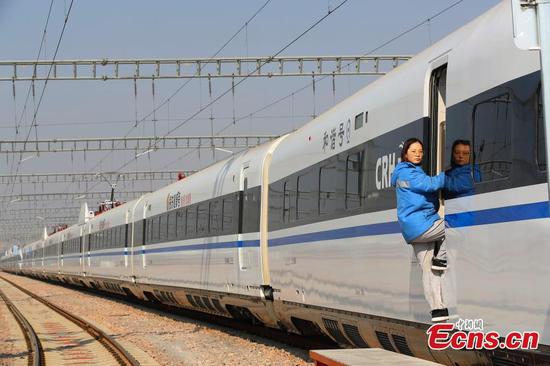The Fed has decided to maintain the target range for the federal funds rate at 2.25 to 2.5 percent, said the minutes of the Jan. 29-30 policy meeting of the Federal Open Market Committee (FOMC), the monetary policy arm of the Fed system.
"Participants pointed to a variety of considerations that supported a patient approach to monetary policy at this juncture as an appropriate step in managing various risks and uncertainties in the outlook," the minutes said.
These details are dovish in nature and point to the greenback experiencing a gradual depreciation in the coming months, on the back of "signs of slower economic activity," according to Czerwonko, the UBS strategist.
"January's minutes reveal that several FOMC participants were of the view that no more hiking this cycle would be necessary unless inflation were to exceed expectations," said Czerwonko.
Echoing his concerns, BlackRock Investment Institute pointed out in a latest report that the U.S. economic expansion is shifting into "a late-cycle phase" of the business cycle, the final phase before a downturn, as fiscal and monetary stimulus is dissipating while the impact of protracted trade tensions is biting back.
"We assess that it will enter the late-cycle phase at sometime in the first half of this year," Elga Bartsch, chief economist at the institute, said Thursday while briefing the report themed the global economy and 2019 outlook.
She noted that the projection was based on analyzing a wide range of U.S. economic variables, including a slowdown in growth, gradually increase in wage inflation, the employment rate being below the natural rate, credit ratio and the savings behavior of the private sector.
OUTLOOK FOR TURNAROUND IN CHINESE ECONOMY
Asked about the recent yuan appreciation, Bartsch talked about one factor that could help support the Chinese currency in a long term, as she believed exchange rates pick up much different information and are always based on a relative basis.
"One thing that might help explain the pattern is the fact that we now know Chinese assets will be included in a number of indices in the not so distant future," Bartsch told Xinhua. "Some of that should support the Chinese markets and create some inflows into Chinese assets."
International financial information provider Bloomberg will include Chinese yuan-denominated government and policy bank securities into Bloomberg Barclays Global Aggregate Index, starting in April, enabling further opening up of China's bonds market, the company confirmed on Jan. 31.
Chinese bonds will become the fourth largest currency component, following the U.S. dollar, euro and Japanese yen, after full inclusion.
China's bonds market stood at about 86 trillion yuan (about 12.84 trillion U.S. dollars) by the end of 2018, with about 1.8 trillion yuan (about 270 billion U.S. dollars) held by global investors, up 46 percent year on year.
"We see that the Chinese government is taking very decisive steps to stimulate the economy, both on the fiscal policy side, and on the monetary and financial policy side," said Bartsch.
"In our view, it's just a question of time until this will start to show in the economic data," she noted.
Although they held China's economic growth seemed to be decelerating at the moment, researchers at BlackRock believed there would be a turnaround in the Chinese economy with a modest growth re-acceleration.
"The Chinese economy looks likely to regain its footing in the first half of 2019," said the outlook report co-authored by Bartsch, as policymakers in China have started to moved toward policy easing with efforts to provide economic stimulus while limit financial leverage.
More specifically, Bartsch mentioned two main measures, i.e. fiscal policy impulse coming through major tax relief measures to boost revenues, and credit impulse to change credit flows with a clear focus on more channels toward small and medium-sized companies than state-owned enterprises.
BlackRock also expected the People's Bank of China, or China's central bank, to ease its liquidity provisions, so as to avoid stoking capital outflows and putting pressure on the yuan exchange rate.
(Xinhua writers Ma Qian, Pan Lijun, Luo Jingjing, Xu Xingtang, Zhang Zhongkai in Beijing contributed to the report.)


















































